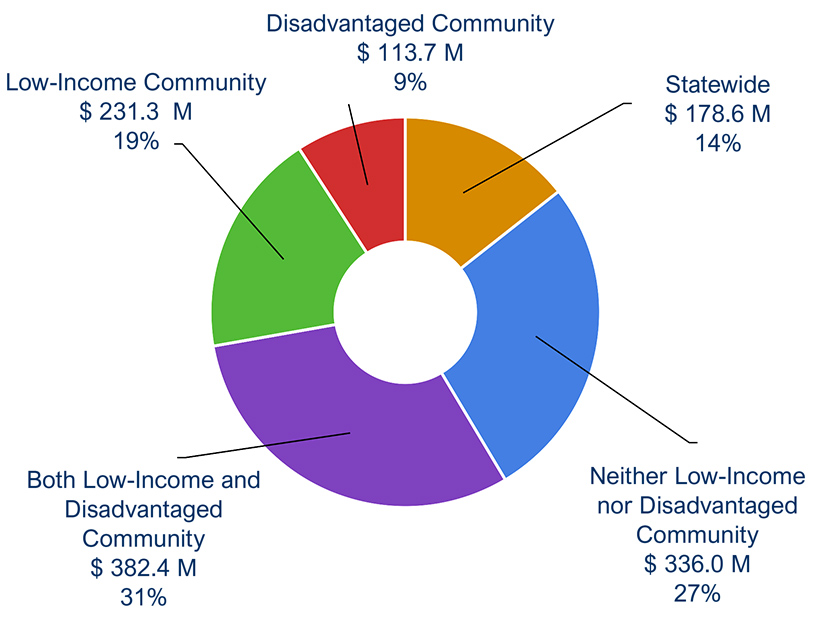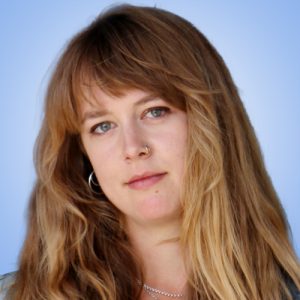
California’s funding of zero-emission vehicle (ZEV) infrastructure must be more equitably allocated to disadvantaged communities, according to advisory committee members for the state Energy Commission’s (CEC) Clean Transportation Program Investment Plan.
“We have the highest prevalence of asthma in Imperial County in comparison to the rest of the state of California and the rest of the nation. … From the moment we arrive here, we are persistently assaulted … with carcinogens and irritants that are causing respiratory problems and cancer,” committee member Luis Olmedo, executive director of the nonprofit Comite Civico del Valle, told NetZero Insider. “For that reason, it is extremely important that we transition to net-zero transportation and the net-zero economy as swiftly and as quickly as we possibly can.”
Details of the Clean Transportation Program were discussed at a June 7 meeting hosted by the CEC, where industry experts grappled with how best to spend the almost $100 million available annually.
“How do we spend our money wisely to accelerate zero-emission transportation and do it in a way that’s very attentive to equity?” CEC Commissioner Patty Monahan said at the meeting. “We need to ensure that Californians who are too often left behind in the transition to clean energy and left behind in terms of facing disproportionate burdens of air pollution, we need to make sure those communities benefit.”
Established in 2008 and recently extended through July 2035 under Assembly Bill 126, the Clean Transportation Program promotes accelerated development and deployment of ZEVs and related infrastructure to meet California’s goal of electrifying 100% of passenger vehicles and drayage trucks by 2035 and 100% for medium- and heavy-duty trucks by 2045. It receives an annual investment of up to $100 million using funds collected from vehicle and vessel registration, license plate and smog abatement fees.
Through 2023, the program was responsible for installing or planning more than 33,300 chargers for ZEVs, creating block grants to incentivize light-duty EV charging infrastructure projects, and allocating funding for 96 publicly available hydrogen fueling stations. It also awarded more than $107.4 million in ZEV infrastructure incentives to 190 projects through the nation’s first commercial vehicle fleet incentive project, called Energy Infrastructure Incentives for Zero-Emission Commercial Vehicles, and more.
The CEC provides an annual investment plan update that guides the allocation of program funding for transportation solicitations for the upcoming fiscal year. Proposed investments for 2024/25 totaled $1.52 billion with the addition of National Electric Vehicle Infrastructure program funds, according to Benjamin Tuggy, Clean Transportation Program Investment Plan project manager at the CEC. Of that total, $656 million is allocated to light-duty charging infrastructure, $810 million to medium- and heavy-duty charging, $46 million to “emerging opportunities” and $3 million to ZEV workforce development.
The CEC requires that more than 50% of funds go to projects that benefit low-income or disadvantaged communities. The Communities in Charge program, which is run by CALSTART and deploys Level 2 chargers, provided $68 million over two funding windows, all of which went to projects in disadvantaged communities, Marissa Williams, a supervisor in the CEC’s Fuels and Transportation Division, said during the meeting.
Additionally, the CALeVIP 2.0 program, which is administered by the Center for Sustainable Energy and deploys DC fast chargers, also distributed $68 million, with a requirement that all projects be in disadvantaged communities.
‘Equity Equals Capital’
But despite the emphasis on equity, some advisory committee members said disadvantaged communities still weren’t being adequately considered. Olmedo told NetZero Insider that while funding is being allocated to low-income communities, it often goes to those in metropolitan areas “where the market is,” creating EV deserts in rural communities like his own.
“We have a lot of EV deserts in California. Companies aren’t going to go and invest there because the market isn’t there,” Olmedo said at the meeting. “The other thing that makes it even more challenging is when you have other state agencies like GO-Biz [Governor’s Office of Business and Economic Development] directing developers to go where the market is and specifically where they have adopted a streamlined permitting process. So, these programs are working against each other to continue to make it more difficult for these EV deserts to thrive.”
Olmedo pointed to legislation that requires permitting agencies to develop a streamlining mechanism, saying it is well intentioned but creates unintended barriers for low-income communities that may not have an internal permitting agency or the staff and resources required. GO-Biz created a map that shows which cities have streamlined permitting processes, signaling developers to “go there,” Olmedo said.
“That communication is what we characterize as redlining in our communities, making it harder when you’re signaling to developers not to come here. You’re creating an EV desert” he said. “There’s a lot of times a misalignment in communication between the Energy Commission, who’s like ‘Hey, let’s build, build, build,’ and then GO-Biz … saying, ‘Yes, build, but build over there.’ So, that became very problematic.”
In an interview with NetZero Insider, advisory committee member Rev. Dr. Charles Dorsey described how state efforts to distribute funding for clean transportation or other resources don’t adequately consider disadvantaged communities. In particular, he pointed to problems with the state’s processes around requests for proposals, which pit disadvantaged communities against bigger organizations that have won awards in the past.
“The structure and the requirements of the proposal automatically create barriers for companies that are led by people of color,” he said. “You have a limited number of contractors who can actually equitably apply.”
“They believe that just by putting the proposal out, that it is equal competition. It is not. Because they designed the proposal without considering the barriers that are already in place,” Dorsey said.
Both Olmedo and Dorsey think the state should better address inequities built into its processes. Olmedo emphasized the importance of including more nonprofits in the process instead of prioritizing for-profit companies that can make money quicker. He noted at the meeting that Comite Civico Del Valle was one of the first nonprofits to receive funding from the CALeVIP 2.0 grant program, which says “a lot about how the state has been wrong in how it has prioritized its investment.”
“If you go to rural communities, you’re not going to make a profit in the next three years,” he said. First, you [have to] create reliable EV infrastructure, and then disadvantaged, low-income communities can take the risk of buying an electric vehicle. Because you have less income, you can’t risk not having reliable infrastructure, because that might mean you don’t get to work on time. That might mean that by the end of the day, you don’t have a job.”
Collaborating with nonprofits and investing in a three-to-five-year plan can create a market in rural communities that ultimately will help California meet its decarbonization goals, Olmedo said. He’s optimistic the Clean Transportation Program will bring EV infrastructure to rural, disadvantaged areas, as long as enough money is invested.
“What we need is capital, and we need to make that a commonly used term whenever we talk about disadvantaged communities,” Olmedo said in the meeting. “Don’t give us more paper. Don’t give us more education. Yes, that is necessary, but equity equals capital, and these programs need to be designed to bring equity and capital into these rural clean transportation deserts.”
While many advisory committee members at the meeting said the allocation of the $1.52 billion was appropriate, Dorsey emphasized he won’t know until there’s a formal process in place to overcome investment barriers for disadvantaged communities.
“When you ask me if the spread is right, you’re also asking me if the process is right,” Dorsey said. “And I can’t answer that question.”
